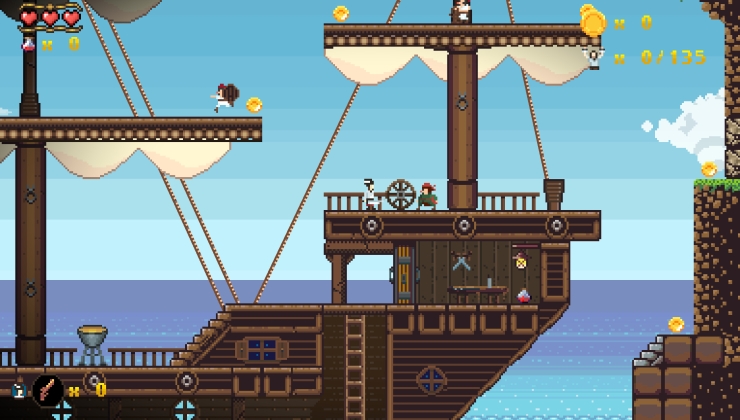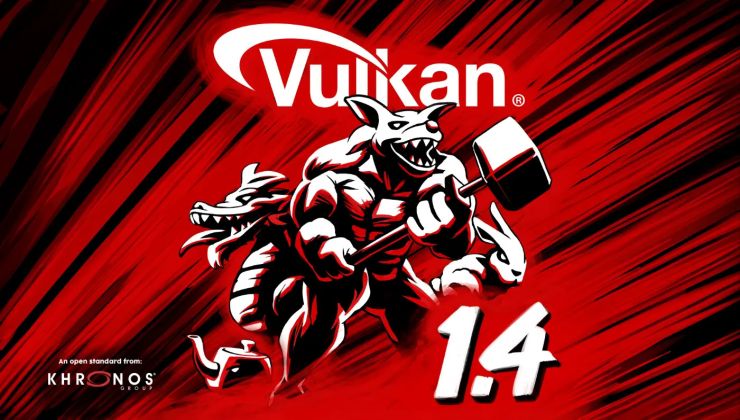After around 25 months of development, Debian has now released the next stable version Debian 10 "Buster" which will be supported for five years. In this release GNOME now defaults to using Wayland instead of Xorg, the AppArmor kernel security module is enabled by default and it's powered by the Linux 4.19 kernel.
For those who don't like to live on the edge, Debian is a good choice for having a solid computing experience with Linux. Debian 10 comes with these available desktops:
- Cinnamon 3.8
- GNOME 3.30
- KDE Plasma 5.14
- LXDE 0.99.2
- LXQt 0.14
- MATE 1.20
- Xfce 4.12
Like other distributions, you don't need to install Debian right away. It has a "live" image you can stick on a USB, to test it without making any changes on your computer.
For those unaware, Debian is what both Ubuntu (so also Mint, elementary OS, KDE neon and many more) and SteamOS base themselves upon, so the work that goes into Debian affects a great many other distributions.
If you're not upgrading right away, rest assured that Debian 9 "Stretch" is still supported and will continue to be for 12 months with the Debian Security Team, after which it will be handed over to the Debian LTS team.
See their official news post here.
For those who don't care about the latest software, but might need a current graphics driver or kernel, there will be a buster-backports repository (like an official PPA, if you will).
Problem: I always quit the debian install for another distro 'cause those kernels coming from ages! How to get bugs and materials working with such delay on kernel! I'm pretty sure solutions exist to get those materials working (last example: a small Pc based on intel https://ark.intel.com/content/www/us/en/ark/products/128990/intel-pentium-silver-n5000-processor-4m-cache-up-to-2-70-ghz.html -> no way to make it working -network and intel gpu-)
Solution? My two cents: I would love debian to launch two different distros: one with current-recent-running kernels and updates (at our own risks, I have the chance to store all my important data on a NAS, so I would take it) and the stable one.
problem2: As says F.Ultra, getting help on a debian install on the internet with few skills on this distro is like trying to have help with no money in another-speaking (and non-spoke) unfriendly country: no avaialble document readable directly, and when asking, either no answer or someone barking at you that you should have bought another materials
I don't understand this: Debian has 3 main branches: https://en.wikipedia.org/wiki/Debian#Branches
The current kernel running on buster is 4.19, which is an extended support release. Newer kernels will be available through backports or if you use the testing suite. Debians installer is not any more complicated than the Ubuntu one, the only extra question is if you want to install non-free software, since those are not officially part of debian, unlike ubuntu. Getting help: there is extensive document for every stable release, broken up by architecture. For example, for the latest release:
https://www.debian.org/releases/buster/installmanual
Yes, well, I've never really understood exactly what LVM is or what it's for, but presumably the same point applies: If it's so awesome and will do something to help me not reformat my data when I do a new install, it should be an option available in the installer, or even the default, so that it can happen without me having to understand how to set it up.Agreed. Although I do have one minor peeve about that Ubuntu (and Mint) installer nonetheless. As a pretty basic user, I still tend to need to muck with the partitioning. Why? Because even the most basic user would be well advised to put their /home on a separate partition from the / with the actual OS. Eventually you're gonna update or reinstall or try a different distro or something, and when you do your life will be so much easier if your actual data you care about is on a separate partition from the one that's gonna get formatted. Sure, you should do a backup anyway, but having those two partitions is basic. But do they have that as an option, or even the default? They do not. If you want that you have to go into the full partitioning thingie and worry about swap and a little boot space and crap like that. Grumble mutter whine bitch.The new Steam officially supported distro just launched.
Awesome.
(Just a speculation, for now...)
Nah, I don't think so.
There's a lot things to do after the installation. IMO they will support a more friendly distro, preferably with a corporation behind, like OpenSUSE or Fedora
Maybe they create a new distro for desktop use based on Debian.
I don't see where people get the impression that Ubuntu is more 'user friendly'. Nothing says that better than their python based installer that regularly crashes at the partitioning step with a bunch of exceptions that are surely easier to read for the average user than plain language.
Because the average used does not use whatever advanced setting that you are using that are causing those crashes. They will simply click "next" all the way. And once they have done so they will have a fully working desktop, and if they need further customization or changes then the Internet is full of blogs and nice looking guides for how to do this in Ubuntu.
That is why.
(I swear I have a recollection of Mandriva having that option available in its installer in the old days)
What you cite is not an argument for partitioning, but rather for the use of LVM.
And frankly I don't know why anyone would partition any linux installation today (except for sharing a drive with Microsoft crapware, of course). It seems to me that this should have been abandoned in the nineties, when I fully switched to using LVM on every installation.
Last edited by cprn on 9 July 2019 at 8:56 pm UTC
Yes, well, I've never really understood exactly what LVM is or what it's for, but presumably the same point applies: If it's so awesome and will do something to help me not reformat my data when I do a new install, it should be an option available in the installer, or even the default, so that it can happen without me having to understand how to set it up.Agreed. Although I do have one minor peeve about that Ubuntu (and Mint) installer nonetheless. As a pretty basic user, I still tend to need to muck with the partitioning. Why? Because even the most basic user would be well advised to put their /home on a separate partition from the / with the actual OS. Eventually you're gonna update or reinstall or try a different distro or something, and when you do your life will be so much easier if your actual data you care about is on a separate partition from the one that's gonna get formatted. Sure, you should do a backup anyway, but having those two partitions is basic. But do they have that as an option, or even the default? They do not. If you want that you have to go into the full partitioning thingie and worry about swap and a little boot space and crap like that. Grumble mutter whine bitch.The new Steam officially supported distro just launched.
Awesome.
(Just a speculation, for now...)
Nah, I don't think so.
There's a lot things to do after the installation. IMO they will support a more friendly distro, preferably with a corporation behind, like OpenSUSE or Fedora
Maybe they create a new distro for desktop use based on Debian.
I don't see where people get the impression that Ubuntu is more 'user friendly'. Nothing says that better than their python based installer that regularly crashes at the partitioning step with a bunch of exceptions that are surely easier to read for the average user than plain language.
Because the average used does not use whatever advanced setting that you are using that are causing those crashes. They will simply click "next" all the way. And once they have done so they will have a fully working desktop, and if they need further customization or changes then the Internet is full of blogs and nice looking guides for how to do this in Ubuntu.
That is why.
(I swear I have a recollection of Mandriva having that option available in its installer in the old days)
What you cite is not an argument for partitioning, but rather for the use of LVM.
And frankly I don't know why anyone would partition any linux installation today (except for sharing a drive with Microsoft crapware, of course). It seems to me that this should have been abandoned in the nineties, when I fully switched to using LVM on every installation.
[...] what LVM is or what it's for [...]
AFAIU it just means you're using logical partitions instead of the primary ones. In the old days (probably still a case but I'm not sure) you could have max of 4 primary partitions. It meant there could be 4 "start" and "stop" sectors magnetised on your HDD drives. If you wanted more you had to talk to your OS and say: - "Listen mate, let's agree that 4th primary partition is actually an extended partition with secondary division on it, from here to there and from there to the middle and from the middle to the end" - and thus you had 6 partitions, i.e. your OS would leave itself a little note on that 4th partition saying: - "It's not a primary partition any more, it's now an extended partition with 3 logical volumes". I think Windows has all kinds of weird restrictions here, e.g. OS can only be installed on a primary partition and there can only be one extended partition, etc., while Linux doesn't have such restrictions and there are all kinds of variations possible, the most popular being whole drive formatted as one extended partition (called a physical partition) containing multiple filesystems (called logical volumes or virtual partitions) but it goes way further. With LVM on Linux you can e.g. connect several physical devices into one logical volume (similar to RAID 0 where a single file is divided into "stripes of data" and written to multiple devices, few stripes each). Wow, all that sounding smart drained me to null! :D Going to sleep, cheers!
Last edited by cprn on 10 July 2019 at 7:22 am UTC
Is there a way to painlessly restart Gnome on Wayland now? The 'r' command didn't work on Wayland few months back.
A new installation defaults to Wayland for GNOME. Don't know about upgrades.
BTW... With every new release of Debian, I wonder how much I'm missing by upgrading instead of reinstalling. Any ideas?
it just means you're using logical partitions instead of the primary ones. In the old days (probably still a case but I'm not sure) you could have max of 4 primary partitions. (...)
No, no, it's so much more than that. Basically you virtualize (ideally) all your storage in a very friendly and flexible manner. You can use the "Unix way" of separate 'partitions' (logical volumes instead, with well-behaved legible names under /dev/name_of_vg) / /usr /opt /var /tmp /home, even set them different ways like mirroring or pinning to a drive, you can at any time dynamically expand them (without stopping anything), you can create or destroy new swap spaces at any time, you can even migrate a logical volume to another disk/media without stopping anything, you just do not feel constrained anymore by space, if your drive is next to full you just buy another drive and add it to the volume group so you keep expanding your logical volumes (which host the filesystems) as you need... It's a whole new world of possibilities, basically you feel liberated from concerns of disk space and fragmentation, and if you screw up you have easy and quick ways to repair it. Also you have new features like using your faster SDD for caching your HDD which makes the Linux LVM much better than the enterprise-grade LVMs for corporate Unixes like AIX and HP-UX.
Ha, now there's a difference between sounding smart and actually being smart. :D
[...] With every new release of Debian, I wonder how much I'm missing by upgrading instead of reinstalling. Any ideas?
Yup. I have this very same feeling with every distribution. Maintainers always add new default apps that are often superior or just have better integration with some other apps, change default configs... And all I do is "upgrade, yes I'm sure, prefer mine, prefer mine, prefer mine, done".
The new Steam officially supported distro just launched.
Awesome.
(Just a speculation, for now...)
I've had a chance for testing it and can confirm: it's the cleanest and best performing distro for gaming I've ever tried.
Last edited by Philadelphus on 22 July 2019 at 10:49 am UTC






See more from me